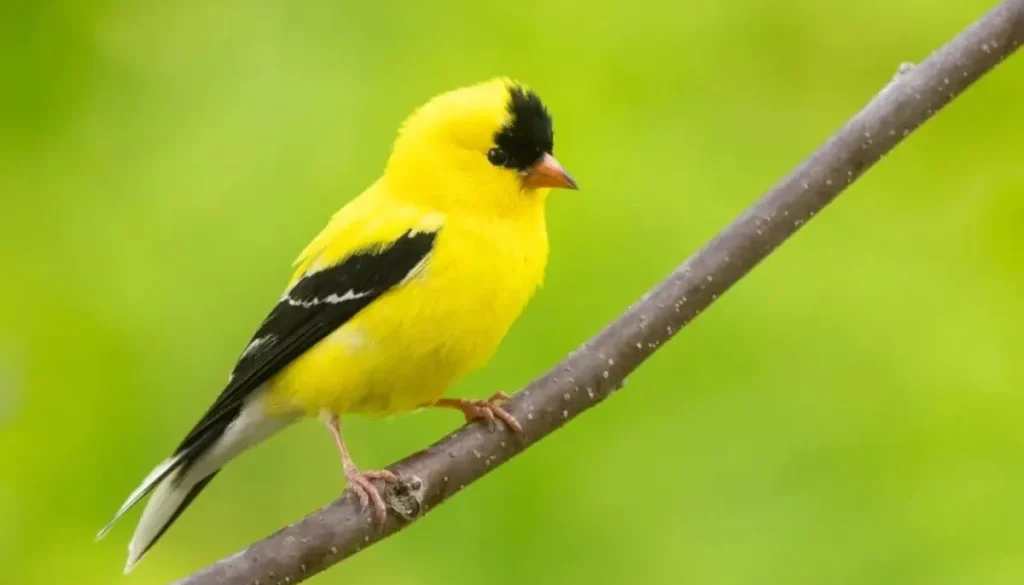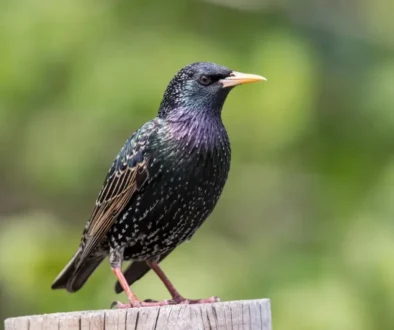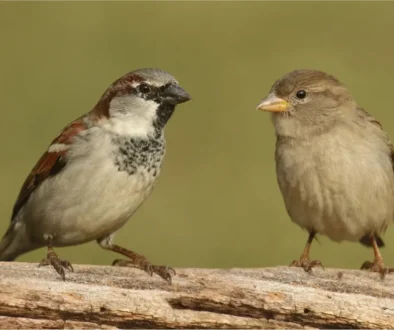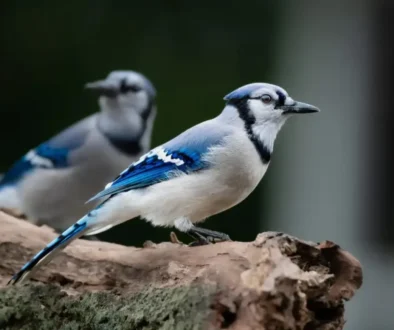American Goldfinch (Spinus tristis)
The Cheerful and Colorful Seed Eater
The American Goldfinch, also known as the Eastern Goldfinch or Wild Canary, is a small, vibrant bird that is widely recognized for its cheerful disposition and bright yellow plumage. As a member of the finch family, it is a seed-eating specialist, often seen flitting about in meadows and gardens.
Physical Characteristics
Male American Goldfinches are particularly striking during the breeding season, with bright yellow bodies, black wings with white markings, and a black cap on their heads. Outside of the breeding season, their plumage dulls to a more subdued olive-brown, which helps them blend in with their surroundings. Females are less colorful, with olive-yellow bodies and dark wings. Goldfinches are small birds, measuring about 4.3 to 5.1 inches in length, with a wingspan of 7.5 to 8.7 inches. They have a short, conical bill that is perfectly adapted for extracting seeds from plants.
Habitat and Range
American Goldfinches are widely distributed across North America, from southern Canada to northern Mexico. They prefer open habitats such as fields, meadows, and gardens, where they can find an abundance of seeds. Goldfinches are often seen in areas with thistle, sunflower, and dandelion plants, which provide their primary food sources. During the winter, they may move to more wooded areas or backyard feeders where seeds are readily available.
Diet and Feeding Behavior
The diet of the American Goldfinch is almost entirely composed of seeds, making them one of the most herbivorous of all North American songbirds. They prefer seeds from composite plants such as thistles, asters, and sunflowers, using their agile beaks to extract the seeds with precision. Goldfinches are also known for their acrobatic feeding habits, often hanging upside down from branches to reach seeds. In the winter, they will flock to bird feeders, particularly those offering Nyjer (thistle) seeds.
Breeding and Nesting
Unlike many other songbirds, American Goldfinches breed later in the season, typically from late June to August, when their preferred food sources are most abundant. The male performs a variety of courtship displays, including singing and fluttering flights. The female builds a tightly woven nest in the fork of a tree or shrub, where she lays 4 to 6 pale blue eggs. Incubation lasts about two weeks, and the chicks fledge roughly 11 to 15 days after hatching. Both parents are involved in feeding the young, although the female does most of the feeding during the early stages.
Vocalization and Social Behavior
American Goldfinches are highly social birds, often seen in flocks during the non-breeding season. Their flight is characterized by a distinctive undulating pattern, accompanied by their cheerful “per-chick-o-ree” calls. These calls are often heard as a lively soundtrack to open fields and gardens. In addition to their flight calls, American Goldfinches have a variety of songs and calls used for communication, including a rapid series of notes used during courtship and territory defense.
Migration and Seasonal Movements
American Goldfinches are partial migrants, with northern populations moving southward in the fall to escape the cold and return in the spring. However, some goldfinches may remain in their breeding areas year-round, particularly in milder climates. During migration and winter, they form large flocks, sometimes mixed with other finch species, making them a common sight at feeders and in fields.
Cultural Significance and Conservation
The American Goldfinch is a symbol of happiness and positivity, often associated with the sunny days of summer. Its bright plumage and cheerful demeanor make it a favorite among birdwatchers and nature enthusiasts. Despite being widespread and abundant, the American Goldfinch faces challenges from habitat loss and pesticide use, which can reduce the availability of food sources. However, its adaptability and fondness for human-altered landscapes have allowed it to thrive, and it is currently listed as a species of least concern.




